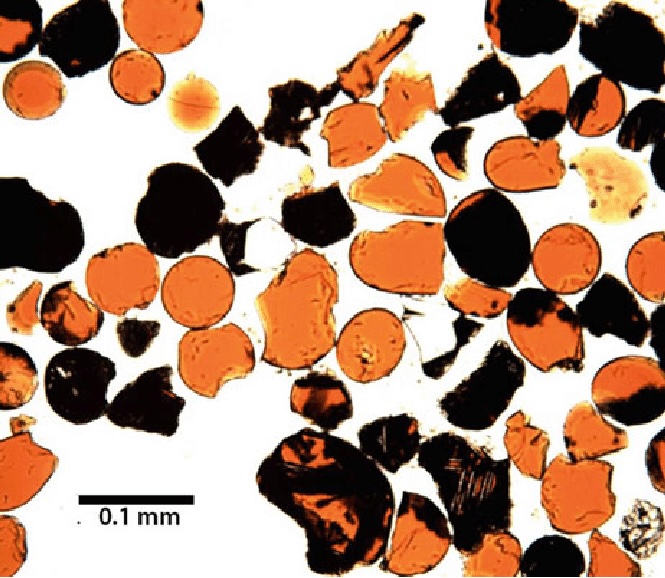2025-06-11 ワシントン大学セントルイス校

Microscopic views of lunar volcanic glass. (Image: Katharine Robinson and G. Jeffrey Taylor, Nature Geoscience, 2014)
<関連情報>
- https://source.washu.edu/2025/06/why-the-moon-shimmers-with-shiny-glass-beads/
- https://artsci.washu.edu/ampersand/why-moon-shimmers-shiny-glass-beads
- https://www.sciencedirect.com/science/article/pii/S001910352500154X
月の火山ガス雲の化学的性質: ガラスビーズ表面の昇華物からの制約 Lunar volcanic gas cloud chemistry: Constraints from glass bead surface sublimates
T.A. Williams, S.W. Parman, A.E. Saal, A.J. Akey, J.A. Gardener, R.C. Ogliore
Icarus Available online: 24 April 2025
DOI:https://doi.org/10.1016/j.icarus.2025.116607
Highlights
- Pristine 74,001 lunar glass bead surfaces host diverse vapour-deposited nanominerals.
- The deposits primarily consist of nanopolycrystalline sphalerite ((Zn,Fe)S).
- Thermochemical modelling supports current lunar volcanic gas composition estimates.
Abstract
Lunar pyroclastic glass beads preserve a record of physical and chemical conditions within volcanic gas clouds in the form of nanoscale minerals vapour-deposited onto their surfaces. However, the scale of these mineral deposits – less than 100 nm – has presented challenges for detailed analysis. Using SEM, TEM, APT, and NanoSIMS, we analysed pristine black glass beads from Apollo drive tube 74001 and found a sequence of sulfide deposition that directly evidences lunar gas cloud evolution. The deposits are predominantly micromound structures of nanopolycrystalline sphalerite ((Zn,Fe)S), with iron enrichment at the bead-micromound interface. Thermochemical modelling indicates that hydrogen and sulfur were major elements within the volcanic plume and ties the iron gradient to decreasing gas pressure during deposition. This pressure drop may also be consistent with our observed trend of potential δ34S depletion. Finally, Apollo 17 74220 orange beads, deposited higher in the Shorty Crater sequence, appear to lack abundant ZnS nanocrystals (Liu and Ma, 2024a), suggesting a change in vapour deposition between orange- and black-glass bead deposition. Together, our results suggest a change in eruption style over the course of a pyroclastic volcanic eruption in the Taurus-Littrow Valley.


